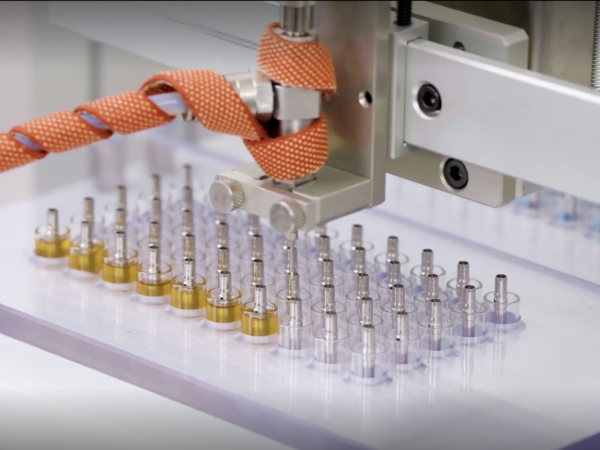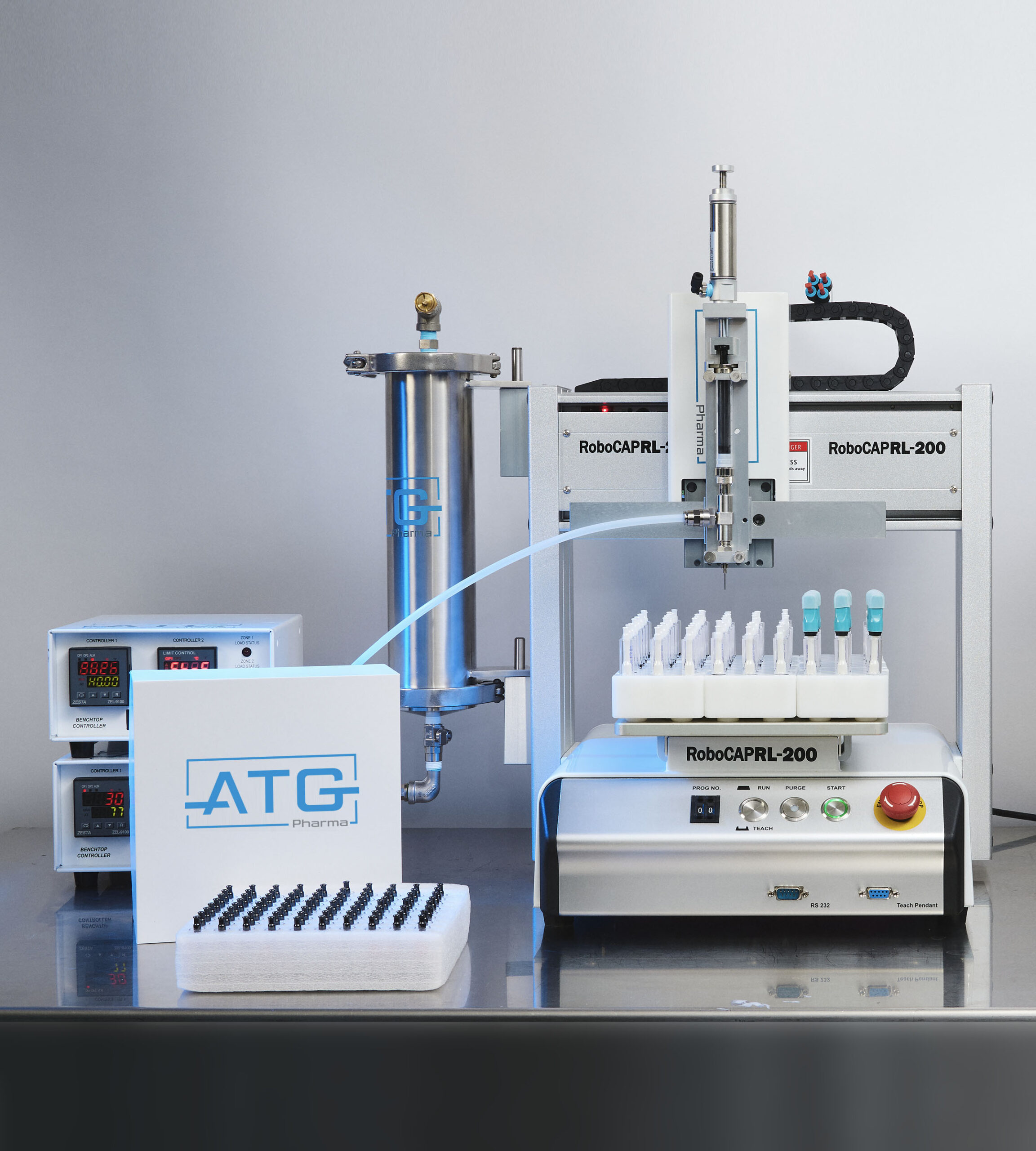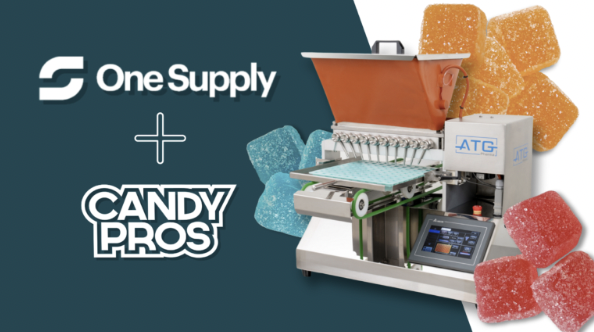- February 29, 2024
Elevating Cartridge Filling: ATG Pharma’s Personalized Approach to Automation
In the ever-evolving landscape of manufacturing, efficiency and accuracy stand as crucial factors determining success. [...]
- January 30, 2024
Cultivating Green Dreams: A Masterclass in Cannabis Automation
In the dynamic and fast-paced cannabis industry, embracing automation becomes essential for your business’s growth [...]
- January 19, 2024
One Supply and Candy Pros: A Winning Team for the Gummy Industry
“Talent wins games, but teamwork and intelligence win championships.” – Michael Jordan Introduction to the Gummy Industry: [...]
BLOG
5 Things to Consider to Maximize Yield and Quality of an Indoor Grow
Growing cannabis spans back throughout history, but the science and scale of growing has changed dramatically in the past few decades. Higher cannabinoid and terpene percentages come at a price; those advanced genetics require a precise environment and can be susceptible to viral conditions and nutritional limitations if conditions are not optimized.
To produce high quality flower at competitive market prices, a cannabis operation must maximize the potential yield of every plant. Maximizing plant yield isn’t simply a matter of putting out more clones and pumping more nutrients. Here are five aspects to consider when pushing the potential of your grow facility.
- Genetics: The foundation of any grow operation comes down to the plants themselves. A high yield depends on starting with cuttings clean of pathogens harmful to the plant. As the industry grows, one degenerative disease, Hop Latent Viroid (HLVd), has spread exponentially along with it. HLVd is a single-stranded, circular infectious RNA that severely breaks down plant potency and flower yields. Unfortunately this disease can run latent in many plants, not manifesting symptoms until large percentages of a harvest has been infected.
HLVd is typically transmitted from plant to plant through the use of shears or gloves, and can easily spread throughout an entire operation. Growers must keep any “mother plants” or genetics in sterile environments with dedicated equipment, and trust only established, guaranteed suppliers of tested clones.
- Substrate: The substrate is where cannabis lives. A high quality, consistent growing medium is vital to growing robust flowers from every node. Roots thrive when they have a proper balance of oxygen and water along with access to beneficial elements like mycorrhizae and trichoderma. Rockwool is a commonly used medium spun from basaltic rock, but is organically inert with no natural life.
Substrates like coco coir are organic, sustainable and offer beneficial elements for roots. “Pure Products” out of Canada offers their ‘Power HP’ high porosity coir that has a natural air porosity of over 30%, which supplies maximum oxygen and allows for maximum expansion of the root system. Thick and abundant roots equate to more nutrient uptake for healthy, high-quality yields. A clean and properly balanced substrate keeps moisture levels optimal and helps prevent other pathogens like Rhizoctonia, Fusarium, and Pythium to establish a hold in your crop.
- Nutrients: Perfect plants in a perfect setting will still struggle under a bad diet. Quality nutrients are important, but in the right ratio and at the right time. Most growers understand that vegetative growth requires a different balance of nutrients than the flower stage, but switching around NPK levels is just the start when working to maximize cannabis’ potential output.
Along with nitrogen, phosphorus, and potassium, the 17 essential elements for plants are calcium, magnesium, sulfur, boron, chlorine, iron, manganese, zinc, copper, molybdenum, and nickel. The necessary non-mineral elements are hydrogen, carbon, and oxygen. Many farmers claim to be able to “read the leaves” through coloration, shape, and structure of the water leaf, but a leaf tissue analysis by a qualified lab is much more reliable and lets the grower tweak feeding for maximum growth and yields.
- Substrate sensors: Keeping an eye on what is happening underneath the surface of your growing media is vital to a healthy crop. The temperature, water content, pH level, nutrient balance, and electrical conductivity of the substrate can fluctuate for any number of reasons; having a “dashboard” with all of this information is going to make the difference in making the most of every day of your plant’s life cycle.

Temperature regulation is important for the plants, but also helpful for fostering healthy microbial growth in the substrate. An optimal temperature of the media (15-30o C/ 60-85oF) will let the plant and other helpful microbes thrive. Monitoring moisture levels helps regulate oxygen around your roots, as well as preventing pathogens from taking hold in soggy soils and inviting rot. The pH level is critical in how the plant can ingest what it needs to grow. An imbalanced pH can cause the plant to take too much or too little of the available nutrients, either causing a toxic reaction or a loss in potential yield.
An Electrical Conductivity (EC) sensor measures the soluble salts in your mix, which is an important indicator of the available nutrients and how well the roots can absorb them. Salinity directly affects nutrient uptake, and nutrients affect overall yield. Aroya makes a wireless three in one meter that monitors water/temperature/EC; an excellent system to keep track of these critical elements.
- Liebig’s Law of the Minimum: In plants, growth is not controlled by the total amount of resources available, but by the most scarce resource required. In other words, increasing the amount of plentiful nutrients does not affect the output of a crop; the only way to increase growth and yield is to discover what the plant is lacking and supply that element. If your plant is lacking in calcium for example, adding all the nitrogen in the world won’t help increase growth until the missing calcium needs are met.
By carefully watching the 17 essential plant elements discussed earlier and focusing on these five areas of concern, a grower can successfully navigate around the limiting factors to get large outputs with minimal wasted product. As the industry develops, precision in nutrients and environment will be the crucial edge growers need to thrive.



